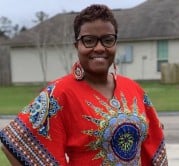Diversity, equity, and inclusion in credit union leadership matters

In the wake of the death of George Floyd at the hands of Minneapolis Police, leaders in many industries, including the credit union industry, have had conversations and made public statements committing to reduce unconscious bias and step up efforts and measures of accountability in the area of diversity, equity, and inclusion (DEI) within their organizations. Although public statements and commitment to change are grand gestures, there has to be more than lip service for the change to be effective. Credit unions thrive by serving and reinvesting in their local communities. Yet, most credit unions do not have a volunteer board or leadership team that mirrors the changing demographic of the members in their community. How do we move from talking about change to taking steps towards credit union leadership becoming more diverse, equitable, and inclusive, and why does it matter?
The Credit Union National Association (CUNA) reported that in 2018 the typical credit union board was made up of 90% white and 8% black and credit union leadership team made up of 90% white and 5% black. Using this information, take a minute to evaluate your board and leadership team. If the credit union lacks diversity in mission-critical positions where leaders make critical decisions that impact its membership, it is time to act. Action is not merely giving an appearance of diversity because you can check the box for having one minority as a volunteer or in leadership. Doing so is called tokenism, which gives a false sense of achievement and has no impact or brings about change. Positions of authority must be culturally balanced to mirror your membership, which will leverage diverse perspectives to ensure the voice of people who look like and have had the same experiences as members are at the head table.
One of the first steps to move towards having a diverse leadership team is for the current leaders to determine if everyone within the credit union has had the same opportunities to reach their full potential, and if not, acknowledge the inequities within the organization, specifically within leadership. Once leaders acknowledge the inequities, an assessment of practices, processes, and culture should occur. Through assessments, leaders can see how unintentional bias has entangled itself within the organization creating limitations for team members. A case for change, strategy, and shift to a coaching culture could counter the unintentionally biased culture by ensuring there are career growth and development opportunities available for employees. Leaders should remain open-minded and transparent because transparency is key to fostering an equitable playing field.
Integrating DEI in succession plans and recruitment strategies is necessary to ensure credit unions move towards leadership becoming more diverse, equitable, and inclusive. Discussing and updating these plans only when there is an immediate need to fill board or leadership vacancies is not enough. Instead, they should be an integral part of succession planning and recruiting and often reviewed and updated. Credit unions should seek and maintain a continually evolving list of candidates who can potentially advance the credit union’s vision and strategic goals and have the desired skills and experiences. These candidates should also cover the full spectrum of human demographic differences, including, but not limited to, age, ethnicity, gender, and socio-economic status. When credit unions foster an environment where DEI is transparent, recruiting and retaining talent is not an issue because candidates will see that the credit union supports diversity and equity, but also has an inclusive work environment where all employees’ unique characteristics and ideas add value.
So why does any of this matter? DEI, just as the credit union’s culture and strategies, is fluid and ever-changing, so there have to be ever-changing and transparent solutions. Diverse viewpoints help leaders understand and be informed by perspectives that differ from their own, shifting from one dimensional to a multi-dimensional outlook. When diverse leaders come together to solve complex problems, their individual cultural experiences intertwine to create innovative solutions that benefit the majority. Credit unions exist to serve their members and local communities, including underserved communities; therefore, the more we can diversify volunteers and leadership in credit unions, the more we will fully serve our purpose.





